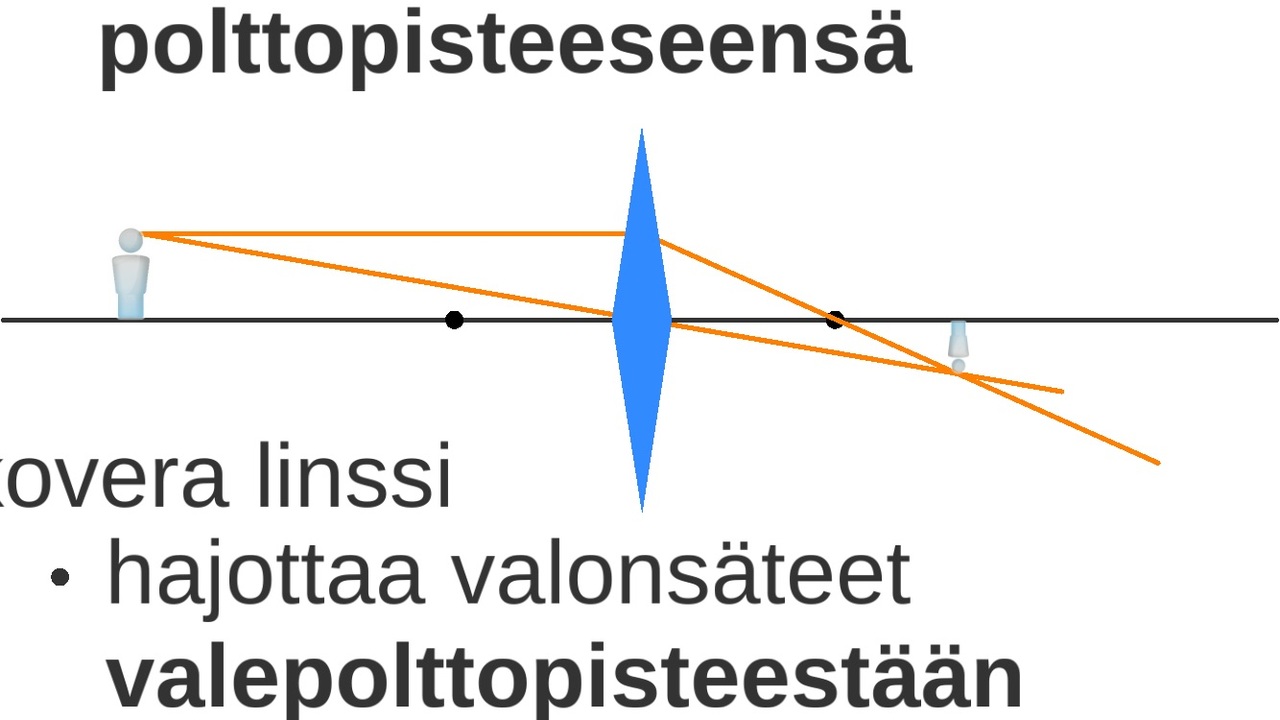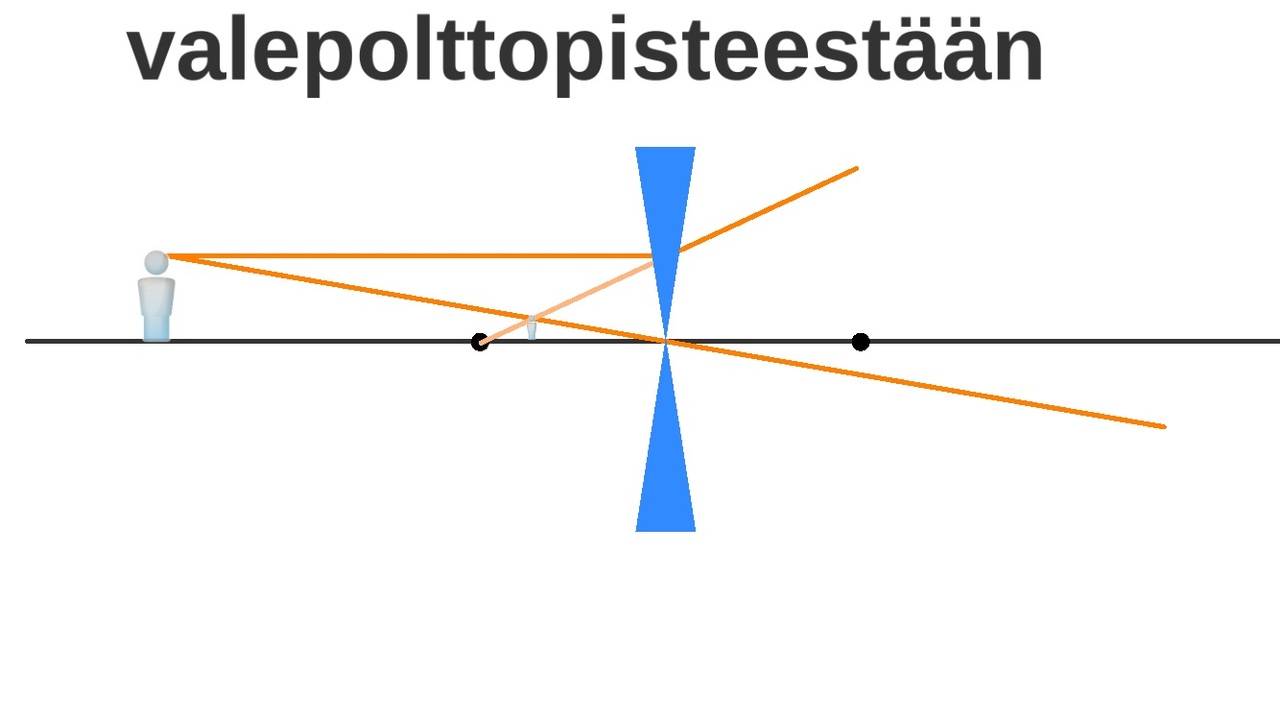Light waves
Study notes

The human eye grants us the sense of eyesight. They are our tool for perceiving vision rays, also known as light. As the light rays from a light source reflect off of a cat and hit your eyes, these organs give out a message of incoming light though your nerveous system to your brain. Your thinking organ, in turn, interprets this message, and after rehearsing this skill for years and years, you recognize the being before you as a feline creature.

Dim lighting makes it hard to see as there is little light reflected for eyes to catch. Light itself cannot be seen.
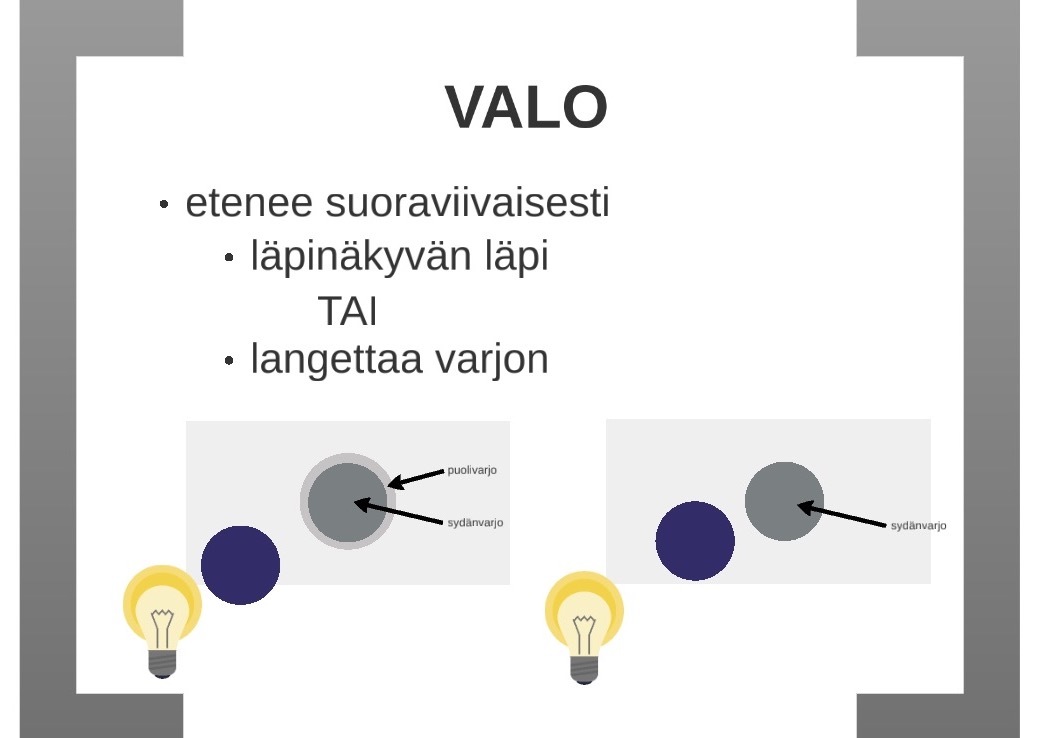
A shadow is formed when light is obstructed.
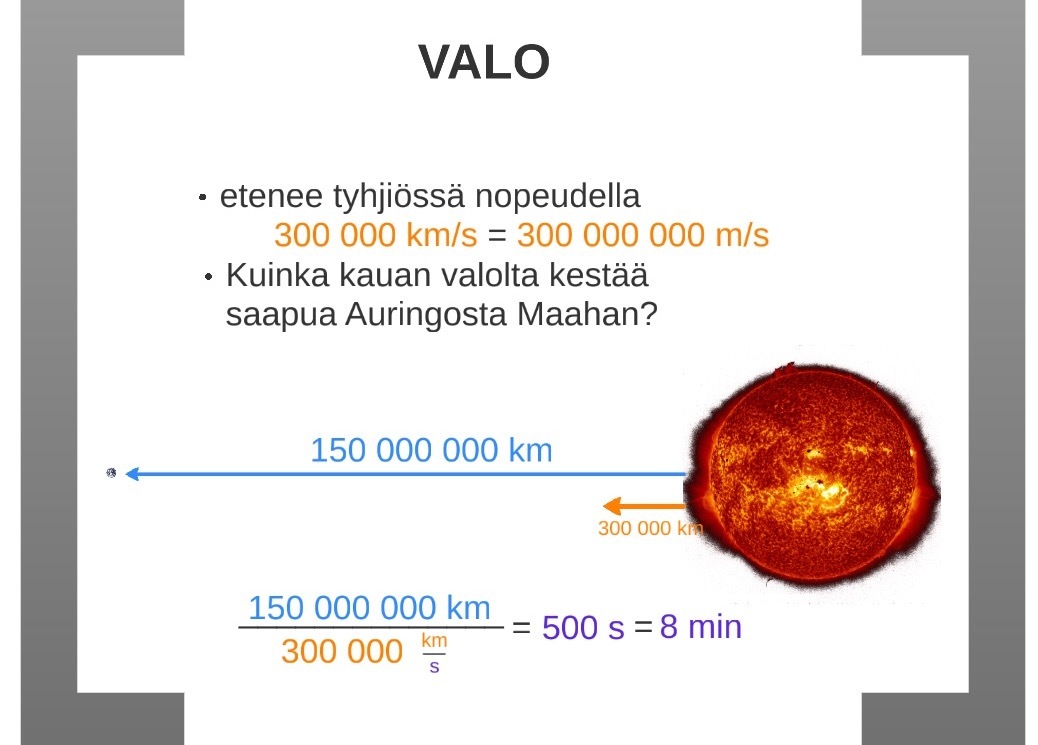
The speed of light, equaling almost 300 000 kilometers per second, is the highest velocity attainable in the universe. According to our modern models, only objects with no mass, such as photons, are capable of moving at this speed, and we massive objects are forever condemned to inferior velocities.
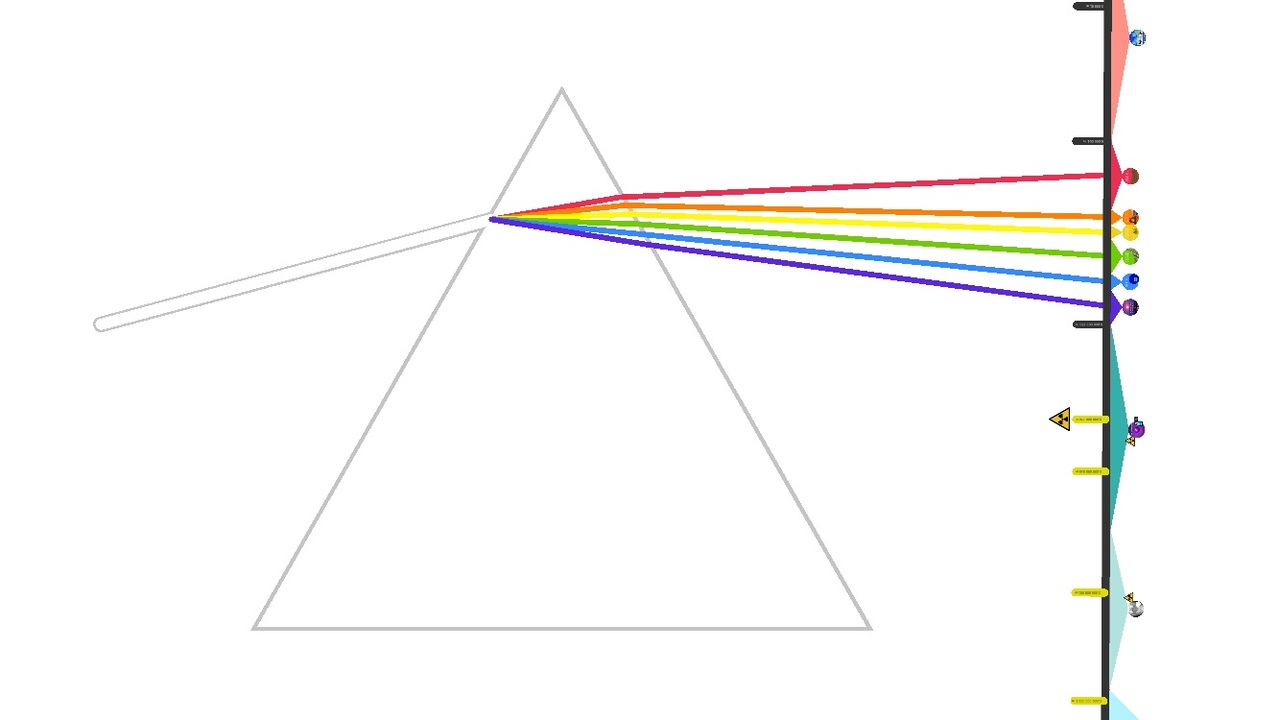
When white light hits a transparent object in an angle, it disperses into the spectrum widely recognized as the rainbow. All phone screens adopt this same principle: by combining different amounts of blue, red and green light, they form all colours imaginable. This method of creating colours is known as the RGB colour system.
Light is actually only a small part of a larger phenomenon known as electromagnetic radiation. It entails many every-day innovations.
These types of radiation, unless in large quantities, are not dangerous to humans:
- radio waves, responsible for modern-day communication
- microwave radiation, enabling microwave ovens to heat food
- infrared radiation, responsible for the Sun's rays' warmth
- light, the basis for human vision
- ultraviolet or UV radiation, responsible for bronzing skin in summer
- X-rays, used in hospitals to study human bones and malformations
- gamma rays, the beams of death emitted by supernovae
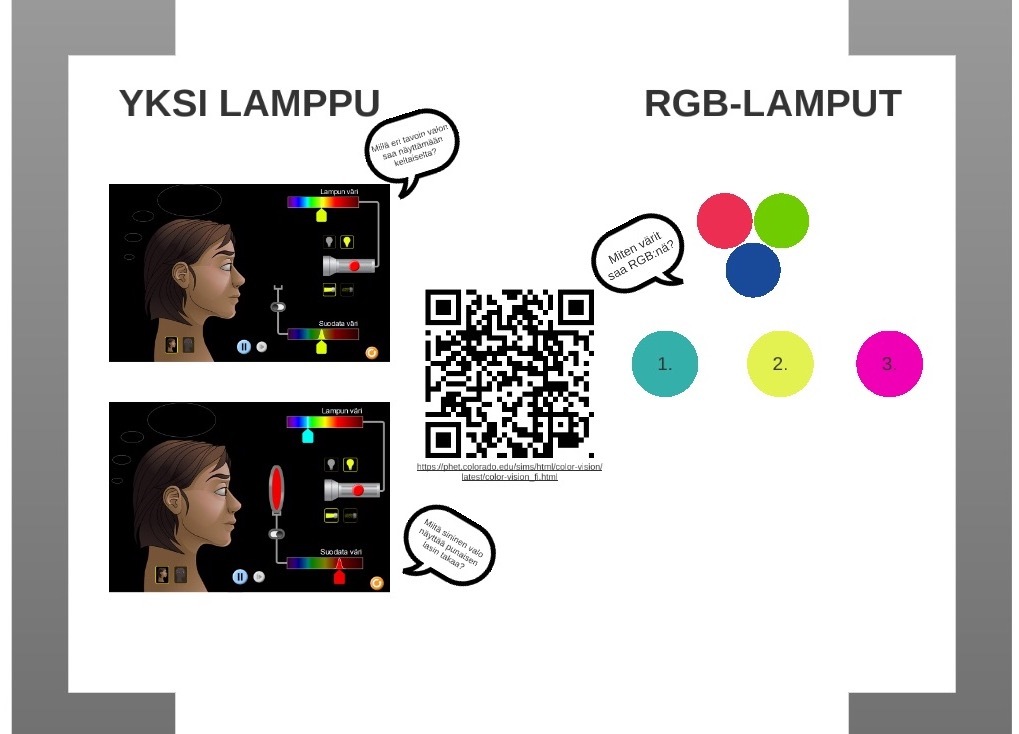
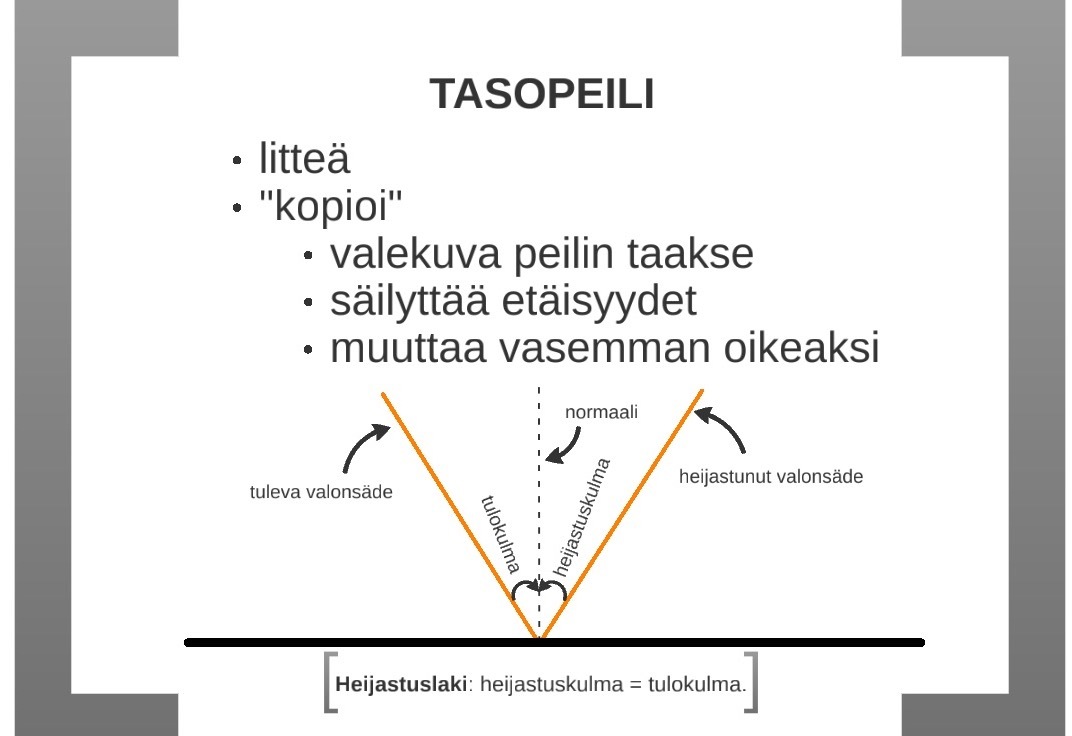
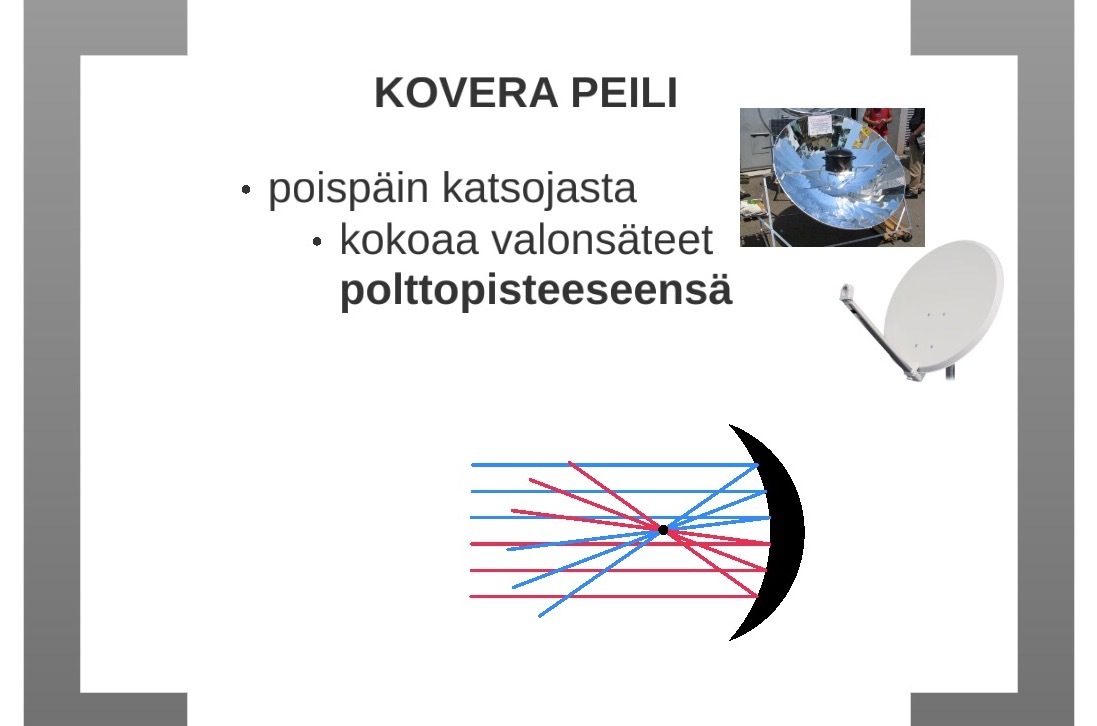
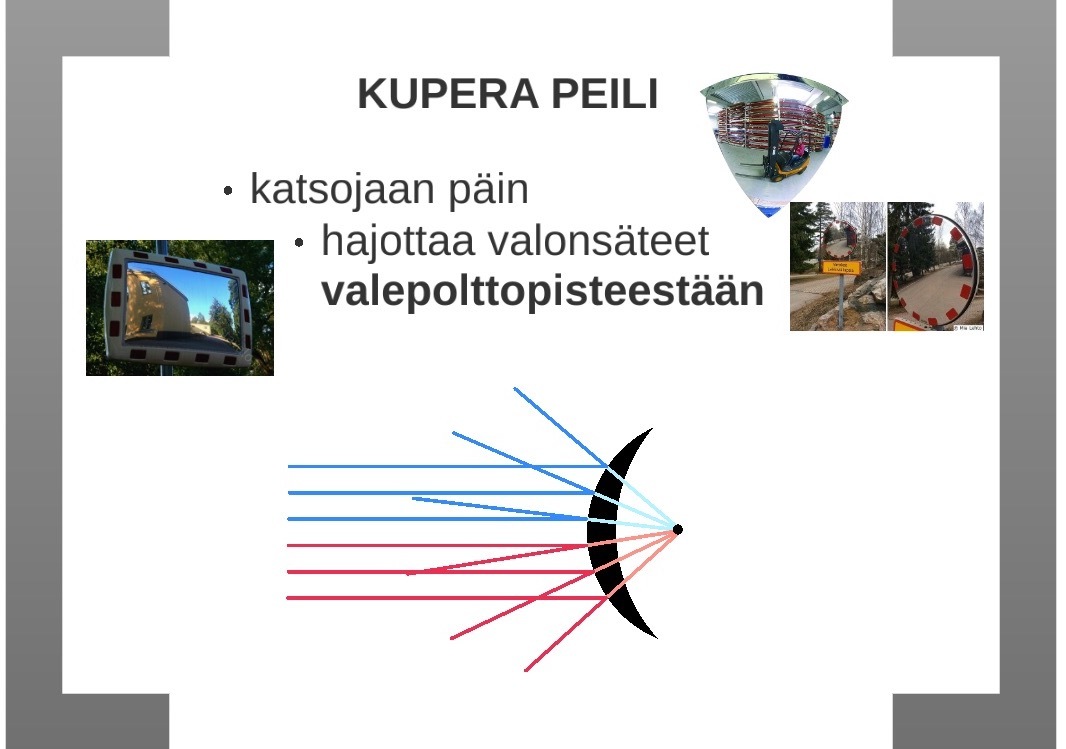
 The shortest route is not always the fastest. As humans tend to run faster than they swim, it is advisable to pick the route that favours running.
The shortest route is not always the fastest. As humans tend to run faster than they swim, it is advisable to pick the route that favours running.
Light can be observed to follow the same principle: when in contact with a denser medium, the light ray is refracted towards the normal of the surface, and when in contact with a sparser medium, the light ray is refracted away from the normal.


